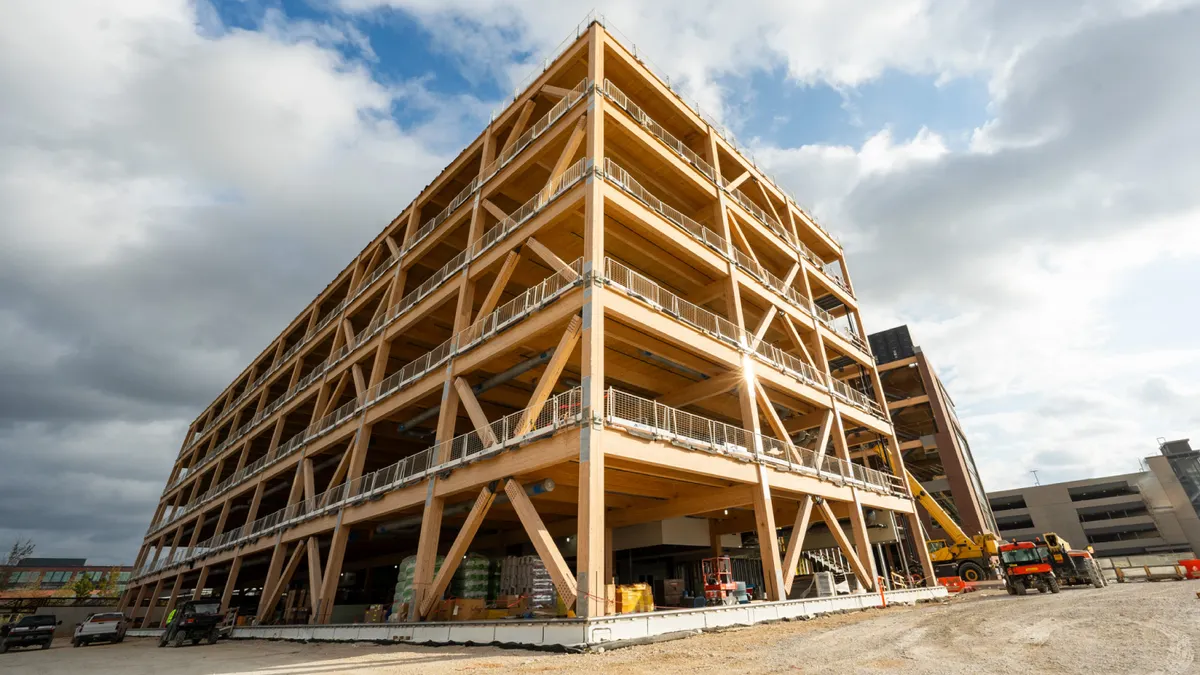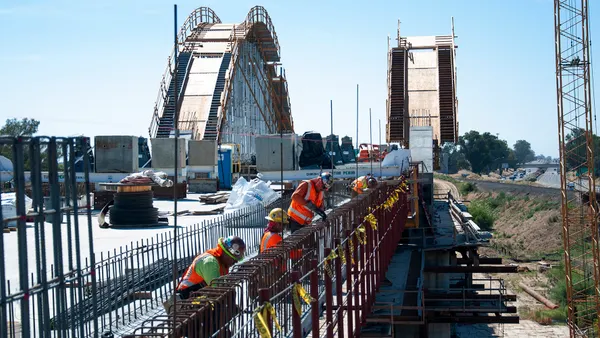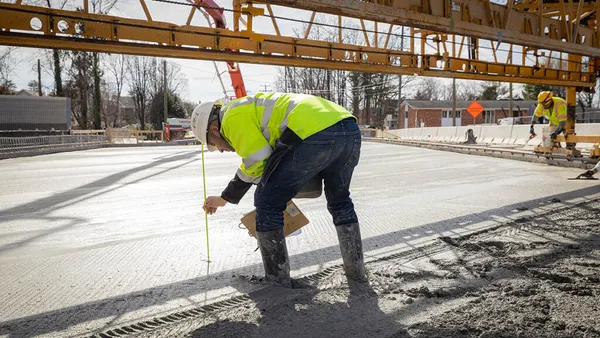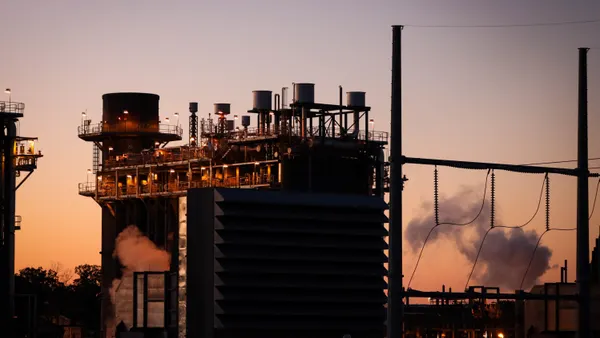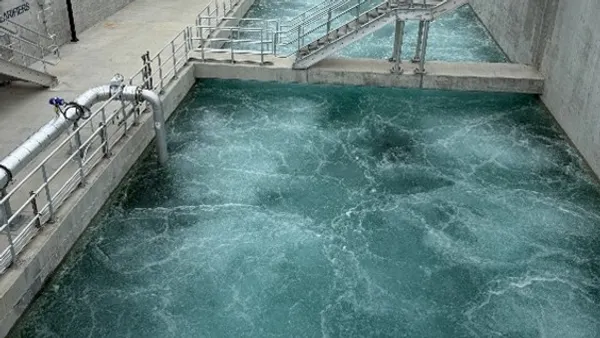Dive Brief:
- The Federal Energy Regulatory Commission (FERC) last month asked the California Department of Water Resources (DWR) to document and account for small cracks that have appeared in some of the concrete slabs that are part of the new Oroville Dam spillway repair project, according to KQED News. A repair contract with Kiewit has reached $500 million, which brings the total spent on emergency and other repairs to $640 million, The Mercury News reported.
- In its response to FERC, DWR said that the cracks were expected as part of the new and stronger design and would not affect the spillway negatively, a determination with which the federal agency agreed. DWR officials said contractors could refine the concrete mix in an attempt to eliminate the cracks, but, since they had no structural impact, it is likely that concrete will remain as is.
- At least one outside expert told KQED that concrete cracks are not the norm and that they could lead to an overstressing of the new structure and create a potential entry point for water to reach and weaken steel supports. Inspection records for the old spillway, which failed earlier this year, revealed that some of its steel rods and rebar were corroded.
Dive Insight:
The latest report from the American Society of Civil Engineers (ASCE) said that U.S. dams, like much of the country's other infrastructure features, are in need of repair or replacement. According to the ASCE, there are more than 90,000 U.S. dams averaging 56 years of age. Seven in 10 of those dams will be older than 50 years by 2025.
The Association of State Dam Safety Officials estimated that performing the necessary work on the country's non-federal and federal dams would cost more than $64 billion. The U.S. Army Corps of Engineers estimates that upgrading the dams under its control would cost more than $25 billion.
According to a February 2017 article published in Water Resources Research, researchers at Columbia University, in conjunction with the Dept. of the Interior and Jacobs Engineering, noted that U.S. dams needed a risk assessment in the context of climate change as well. This, combined with issues of age, flood control and hydropower, they wrote, requires a national assessment of the physical state of dam infrastructure and what role dams will play in the future of water storage.



